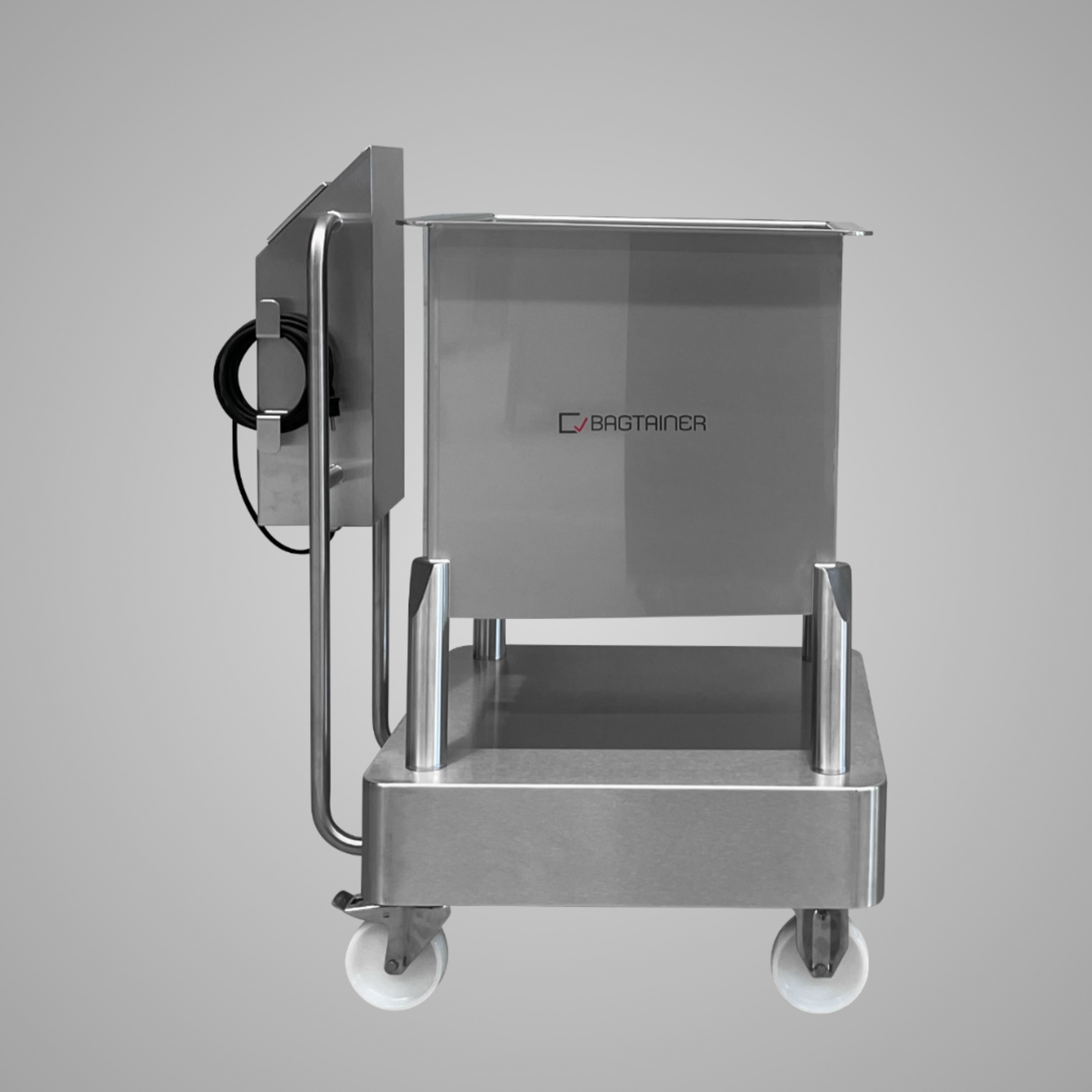How Using Capacitive Load Cells Increases Uptime for Mobile Totes
Case study
A Case Study on Eilersen Beam Load Cells
Eilersen continuously partners with industry leaders to qualify our equipment and concepts in real-world conditions and simulated process environments. In this study, we partnered with a Belgian mechanical and electrotechnical engineering firm to test the performance of capacitive load cells on mobile totes and mixers for biopharma manufacturing.
The biopharma industry has increasingly adopted single-use equipment and mobile totes in recent years. This is due to the flexibility it provides, enabling manufacturers to make changes in manufacturing layout faster than before. Other benefits are also valued, as single-use equipment leads to a lower risk of contamination and reduced time and costs associated with cleaning and validation.
The use of mobile totes can however present a challenge when it comes to other aspects. As load cells using strain gauge technology are sensitive to the sideloads they encounter in such an application, accurately measuring the product's weight in the tote or mixer can be a problem. Movements and uneven surfaces can result in strain gauge load cells being impacted, losing calibration, and thus leading to inaccurate measurements.
The Limitations of Strain Gauge Load Cells
A large international biopharma manufacturer encountered several challenges when pushing around their mobile totes equipped with strain gauge load cells. During daily activities, mobile totes are frequently pushed around carrying bags of liquids. To prevent the load cells from being overloaded, many strain gauge load cells are installed with some variety of mechanical protection such as brackets or stay rods. During high sideloads the stay rods and brackets protect the load cell. However, after impact, the tension between the load cells and stay rods affects the weight reading and accuracy, causing a need for recalibration of the entire weighing system. Such issues are well documented and caused by simple movements such as technicians turning the tote around corners, pushing, or pulling the tote. Key limitations relating to the use of strain gauge load cells include:
- Strain gauge load cells can be overloaded by the impact occurring when rolling over bumps and uneven surfaces when moved between locations.
- Strain gauge load cells can be overloaded when being pushed around the facility using an electrical mover.
- Strain gauge load cells can be overloaded by the sloshing of liquids in the mobile tote during transportation.
- The mechanical elements protecting the strain gauge load cells introduce tension that influences weight reading and accuracy.
If the technicians suspect that the load cells on a mobile tote have been overloaded, a recalibration of the weighing system is required. This process will take the tote out of production for several hours and can cost thousands of dollars, due to the use of expensive single-use bags, a large volume of purified water, and time spent on documentation.
To overcome these challenges, the biopharma manufacturer installed a mechanical “transport lock” by each strain gauge load cell to protect the load cell from the impact of bumps and sloshing liquids whenever the tote was moved around the facility. For this system to work properly, the daily operators would have to manually engage and disengage the brackets before and after moving the tote. In practice this action was frequently forgotten, causing deviations, and requiring recalibration of the weighing systems. To solve this important issue, the biopharma manufacturer approached the Belgian mechanical and electrotechnical engineering firm, specializing in the design and production of parts for pharmaceutical companies.

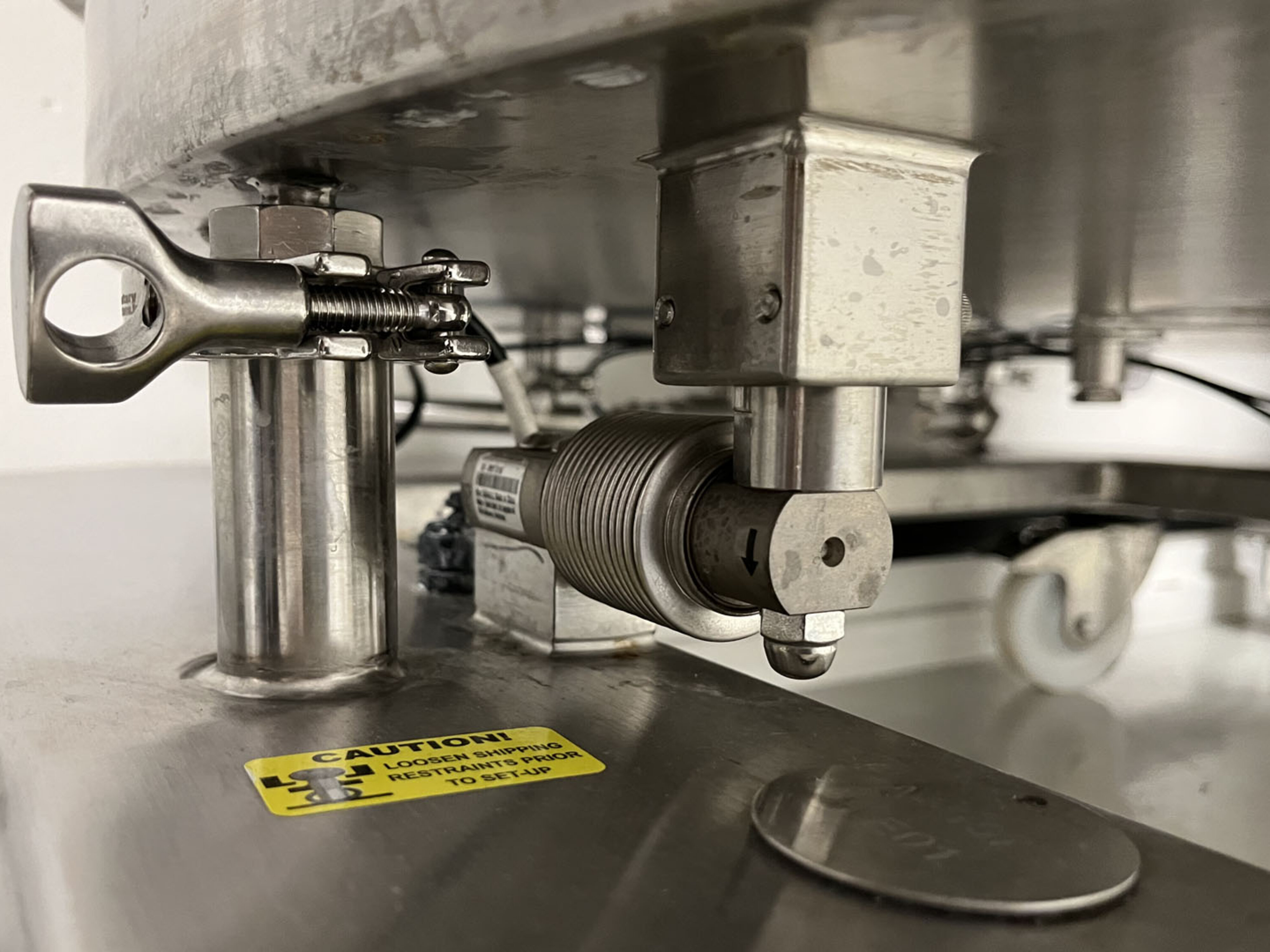
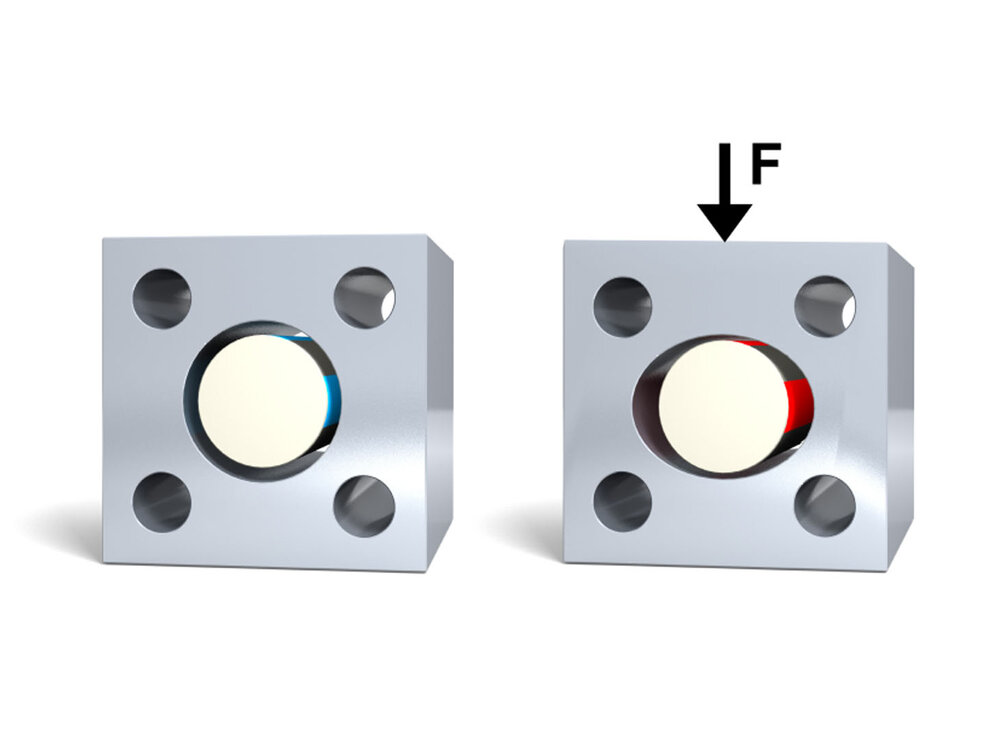
Assessment of Capacitive Load Cells
Being familiar with the capacitive technology of Eilersen load cells, the engineering firm knew that capacitive load cells do not require transport locks, stay rods, or brackets for overload protection due to the capacitive weighing technology. While strain gauge load cells measure the change of resistance, the capacitive technology instead measures the change of distance between the load cell body and an internal ceramic sensor. This patented contactless measurement principle makes the capacitive weighing technology resistant to sideload and able to handle up to 1,000% overload.
A test system was required to assess the performance of the capacitive technology when subjected to the impacts of daily operations in the biopharma industry. Therefore, a mobile tote was retrofitted using the following products from Eilersen:
- 3 pcs. BL beam-type load cells with capacity 150kg and 0.025% accuracy
- 1 pce. 5024G Digital LCD Weighing Indicator
Tests were conducted after retrofitting the tote with Eilersen load cells to measure the influence of movements on uneven surfaces while transporting a mobile tote at full capacity.
Test on Uneven Surfaces
An aluminum plate and a wooden plate were used as a simulation of obstacles commonly encountered by a mobile tote. The plates were placed on the floor in front of the mobile tote causing an impact force when rolled over. Two tests were conducted – one in which two side wheels encountered the aluminum plate and another in which all four wheels encountered the wooden plate. The biopharma manufacturer had previously experienced a significant variation when strain gauge load cells were subjected to similar impacts caused by a full tote rolled over such plates.
Results
After rolling over the aluminum and wooden plates of 3 and 4 mm, the weighing indicator cells displayed a variation of between 0.010% and 0.020% of full-scale after impact without utilizing lockouts or any protective devices. These results were within the MPE (Maximum Permissible Error) requirements of the biopharma manufacturer.
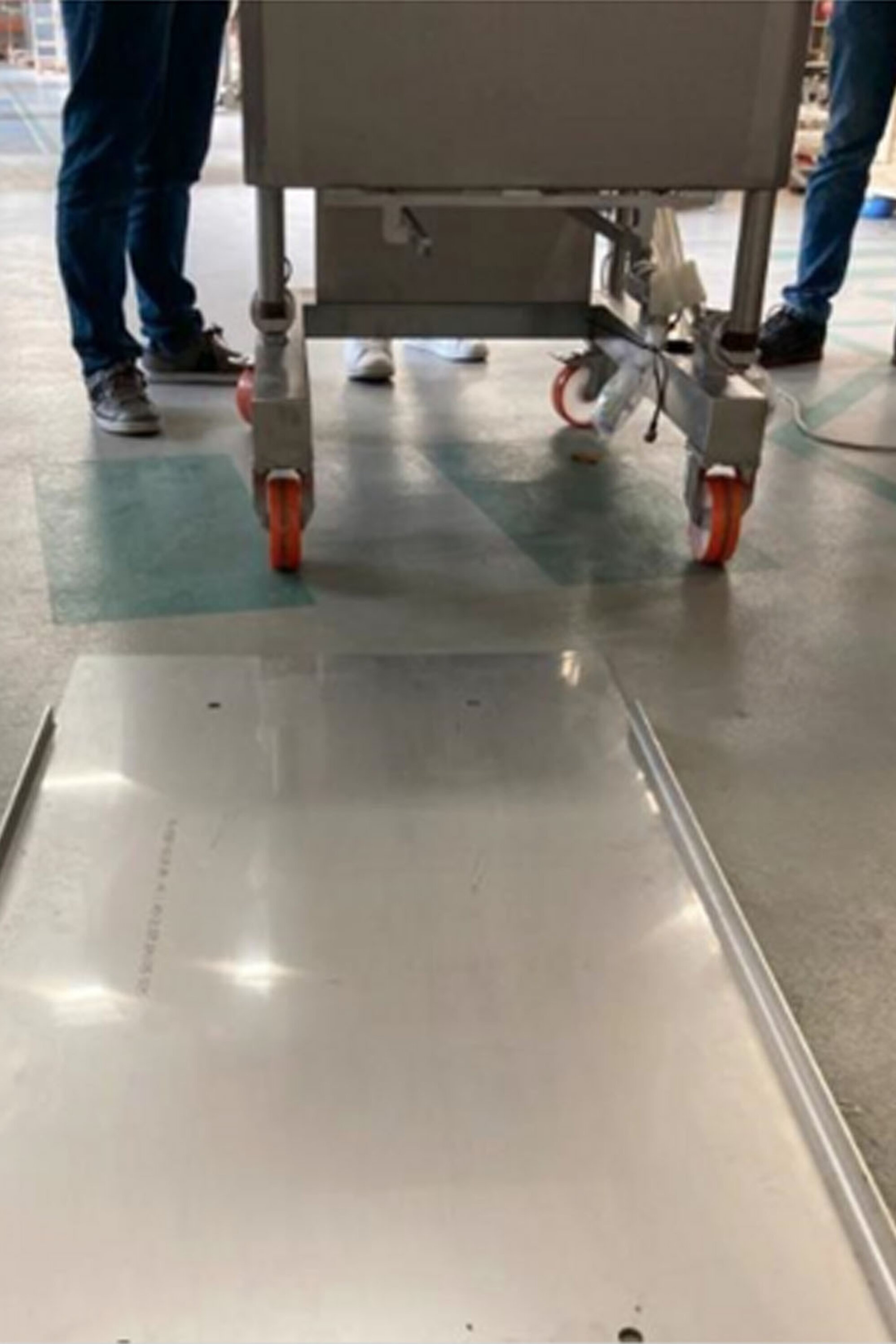
Thickness~3mm
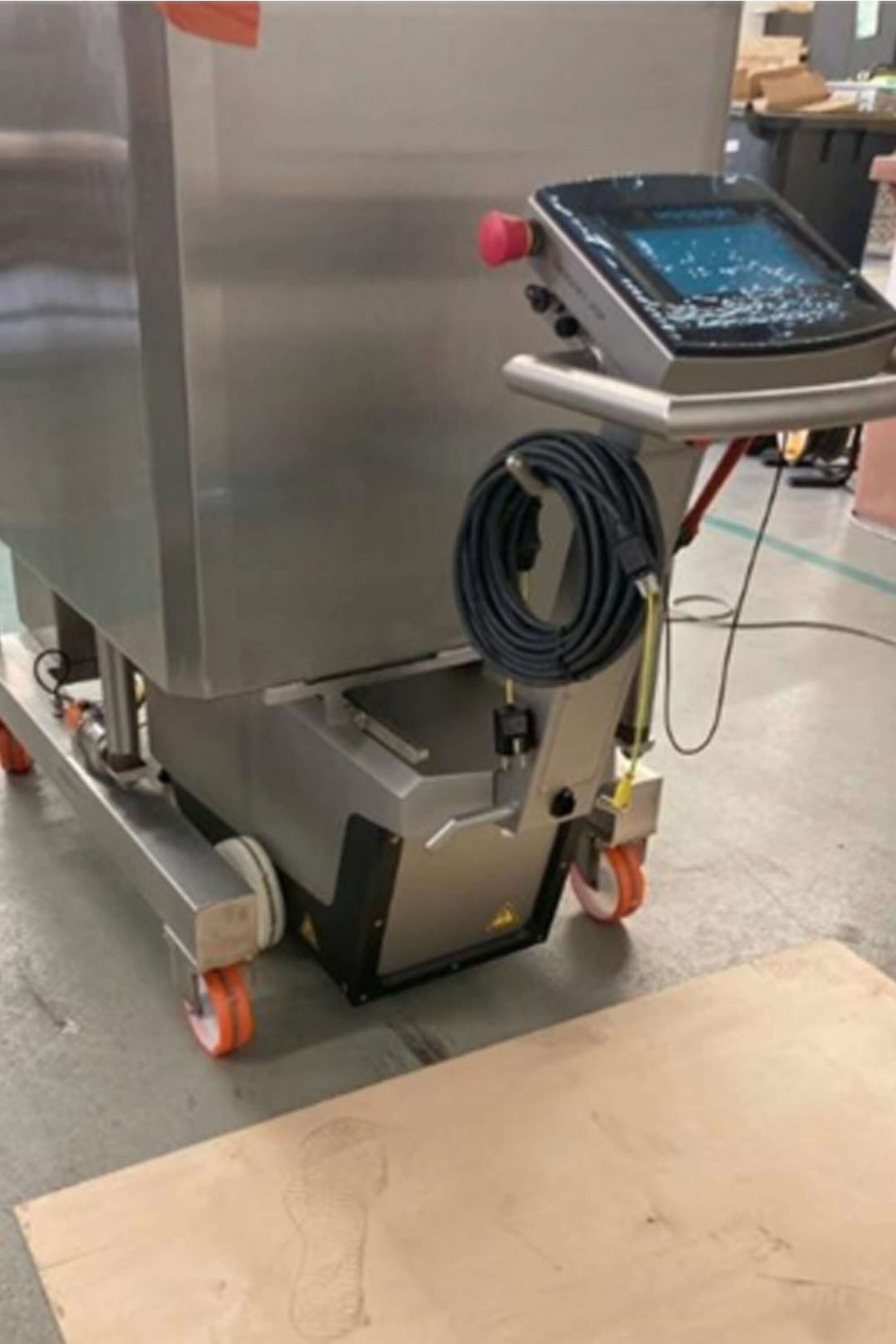
Thickness:~4mm
Conclusion
The replacement of strain gauge load cells with Eilersen capacitive beam-type load cells resulted in a weighing system being able to sustain sideloads due to movements and impacts commonly occurring during daily operation. Following tests conducted at full tote capacity, the weighing system based on Eilersen capacitive load cells exhibited only minor differences that were well within their rated accuracy.
Following these results, the biopharma manufacturer decided to replace their existing strain gauge-based weighing systems with Eilersen digital beam load cells for all mobile tanks in their manufacturing process.
Over time, replacing strain gauge load cells will lead to a decrease in unforeseen instances of inaccurate weighing data and a reduction in downtime caused by the need for recalibration. After changing load cell technology, the biopharma manufacturer has gained enhanced flexibility, eliminated expenses associated with overload-protection brackets and cleaning, and alleviated concerns regarding deviations in their weighing systems.
Summary
- Strain gauge load cells need “overload-protection brackets” and “transport locks” to protect from sideloads and impacts during daily use.
- Capacitive technology can handle up to 1,000% overload due to the contactless measurement principle.
- Capacitive load cells allow reading of individual load cell values and replacement of load cell cables on-site without the need for recalibration.
- The movement tests on uneven surfaces showed satisfying results with a deviation that were will within the MPE of the plant.
Request a Quote
Looking for a tailored weighing solution? Fill out the form below, and our experts will provide you with a customized quote based on your specific needs. Whether you're in food, pharma, or another industry, we'll help you find the perfect solution.
Get started today
Complete the form, and we’ll get back to you promptly with a competitive quote and expert guidance to fit your requirements.



